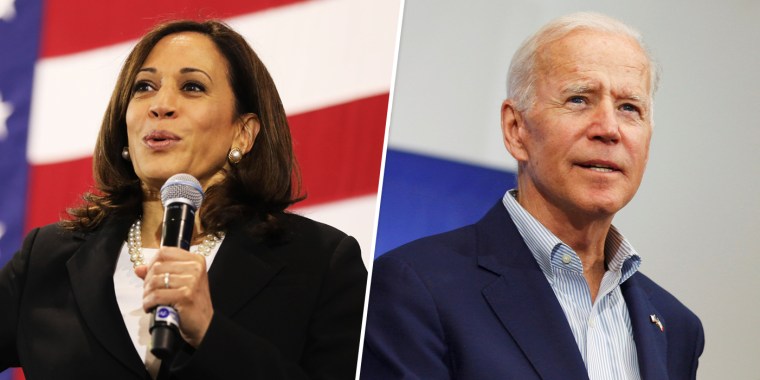 |
| Ruth Marcus |
Check out
The Washington Post op-ed writer Ruth Marcus's column today: "
Warren had a good zinger on gay marriage. It was bad politics."
Ms. Marcus chastises Senator Elizabeth Warren, one of the Democratic party's leading presidential candidates, for her answer when asked at a recent LGBTQ forum:
How would she respond, Warren was asked at CNN’s forum on LGBTQ issues, to a voter who told her, “I’m old-fashioned, and my faith teaches me that marriage is between one man and one woman”?
Her response, as characterized by Ms. Marcus:
The Massachusetts senator and Democratic presidential candidate couldn’t resist the opportunity for a double dig. “Well, I’m going to assume it’s a guy who said that,” she began, giving the audience the chance to snicker along about the evident cluelessness of the male gender. “And I’m going to say, ‘Then just marry one woman — I’m cool with that.’”
Warren shrugged, as if to say, no biggie, live and let live. The audience whooped with delight. Warren shrugged again. Then she went in for the easy kill. “Assuming,” she said, “you can find one.” She turned, clapped along with the audience, nodded in evident satisfaction, put palms up as if to say, what is wrong with people who just don’t get it?
I agree with Ms. Marcus that
... it was a mistake that evoked missteps of Democratic campaigns past — a dismissiveness that Warren and her fellow candidates would do well to avoid.
This is bad politics, which may be the strongest immediate argument for shifting course, yet it is something worse than that. It reflects an attitude of intolerance and disrespect toward people of faith. Those who reasonably expect tolerance and respect should think about — well, they should think about the importance of practicing what they preach.
 |
Sen. Elizabeth
Warren |
I had the same reaction when I first read Annie Linskey's
coverage of the event itself. Her coverage appeared on
The Post's front page on October 11 of this year. Ms. Linskey wrote:
After landing her punchline, Warren turned, took a few steps and smiled broadly as the room exploded in laughter. Her response went viral online, and by Friday afternoon, Warren’s campaign team, which rarely brags about such things, was crowing that the clip had garnered more than 12 million views on Twitter.
I'm a Catholic who is torn between my church's proscription of marriage between two members of the same sex and today's widespread acceptance of it. I am also aware that many Protestants oppose same-sex relationships because the Bible's Book of Leviticus (for instance) says:
“[Men] shall not lie with a male as one lies with a female; it is an abomination.” (Leviticus 18:22)
There are other biblical references, both in the Hebrew Bible/Old Testament and in the New Testament, to homosexual relations being theologically anathema. My understanding is that members of many Protestant denominations read the Bible as their exclusive source of understanding of the God they worship, and the Bible seems to be pretty clear that homosexuality is, in its terms, an abomination.
 |
St. Thomas Aquinas
(1225-1274) |
But as a Catholic I also realize that my church has historically
added to the understanding of God that the Bible itself bestows. There have been centuries of thinking and writing various treatises about what we Catholics, as Catholics, ought to believe. Much of this writing, including that of St. Thomas Aquinas, has invoked "natural law."
I realize that natural law philosophers/theologians maintain that we humans — whether or not we are Christians or even believers in God — have certain ideas about right and wrong graven on our hearts; we're divinely endowed with the capability of rational thought about what is moral and what is not.
I've begun reading David Haines and Andrew Fulford's
Natural Law: A Brief Introduction and Biblical Defense. It's good, but it's aimed mostly at modern Protestants who have factored out natural law from their theological belief on grounds that natural-law thinking seems to support a Catholic idea that salvation
can come from doing "good works" sheerly out of the goodness of our hearts. Most Protestants believe that salvation comes solely through faith in Jesus Christ alone, not out of "works," no matter how "good."
This emphasis by Haines and Fulford, from the perspective of my Catholic belief, misses the point.
*****
By chance I've also just run across an apt article in a recent
Commonweal magazine, "
Does Church Teaching Change? Church Doctrine at Trent, Vatican I, and Vatican II," by John W. O’Malley, S.J. Prior to the Council of Trent of 1545-63, Fr. O'Malley says, it was generally understood that Catholic teachings could never change. That attitude prevailed in the Catholic Church until Pope Leo XIII’s encyclical
Aeterni patris (1879).
That encyclical, not coincidentally, followed in the wake of the 1859 publication of Charles Darwin's
The Origin of Species, the book which expounded what became known as the theory of evolution. If species actually evolve over time, Darwin's thought implied, then
nothing is completely immune to change. Ergo, Catholic teaching itself has never been immune to change. Per Fr. O'Malley, Leo XIII’s encyclical accordingly initiated a revival of the study of the works of Thomas Aquinas.
Such a revival was termed
ressourcement, a French word for "return to the sources." Perhaps errors had crept into Catholic teachings that were derived from Aquinas's writings — such as his
Summa Theologica, the work from which many Catholic teachings about natural law had long been derived.
In the early 1960s,
ressourcement became one of the major concerns of the Second Vatican Council. Fr. O'Malley writes:
In the mid-twentieth century, return to the sources, now explicitly under the neologism ressourcement, drove much of the theological ferment in France that played such a major role in Vatican II. At the council virtually all the participants accepted the validity of the return-to-the-sources principle. Disputes over it arose only when it seemed to be applied too radically. Those who balked at such application had a point because ressourcement had more potent implications than [mere] development. While development implies further movement along a given path, ressourcement says that we are no longer going to move along Path X. We are going back to a fork in the road and will now move along a better and different path.
Development and ressourcement are both about corporate memory, the memory that is constitutive of identity. What institutions wittingly or unwittingly chose to remember and chose to forget from their past makes them what they are. The great battles at Vatican II were battles over the identity of the church: not over its fundamental dogmas, but over the place, relevance, and respective weight of certain fundamental values in the tradition.
What Fr. O'Malley writes in his article clearly implies that post-conciliar Catholic theologians are not yet in complete agreement about how the natural-law teachings of Aquinas, given
ressourcement, ought to be applied today ... and, in particular, how they should inform today's Catholic beliefs about sex, marriage, procreation, and LGBTQ issues.
In other words, I'm still searching for Catholic answers, firmly grounded in natural law, to certain questions that are of the utmost sociocultural importance today.












